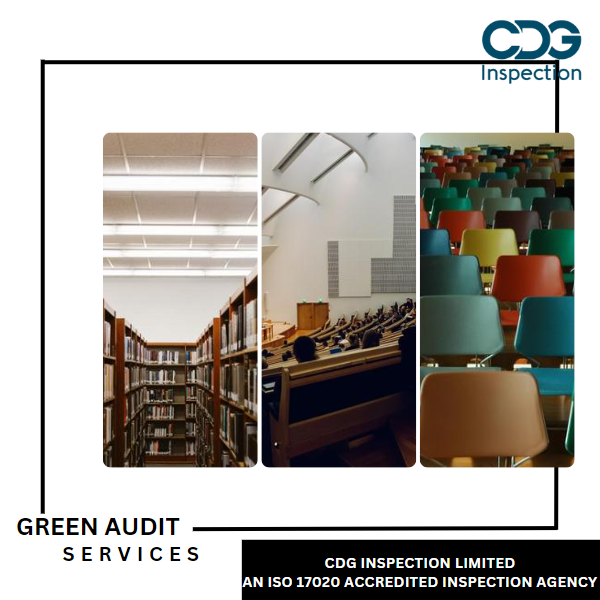Introduction:
Rajkot, renowned for its industrial prowess and educational institutions, is forging ahead on the path to environmental sustainability. As part of this commitment, numerous educational institutions in Rajkot are embracing the NAAC Green Audit, a comprehensive evaluation aimed at assessing their environmental practices and promoting the adoption of sustainable measures. This blog post delves into the profound significance of the NAAC Green Audit in Rajkot, shedding light on its pivotal role in shaping a greener and more sustainable future for educational institutions.

1. Unraveling the NAAC Green Audit
The Essence of the NAAC Green Audit
The NAAC Green Audit stands as an initiative propelled by the National Assessment and Accreditation Council (NAAC) to gauge and promote sustainable practices within educational institutions. It encompasses a multifaceted evaluation of environmental conservation, energy efficiency, waste management, green infrastructure, and awareness programs.
2. Objectives Anchored in the NAAC Green Audit
The NAAC Green Audit in Rajkot thrives on several core objectives, including the stimulation of sustainable practices within educational institutions, raising environmental awareness among stakeholders, minimizing ecological footprints, and contributing to the holistic development of a sustainable society.
The Dynamic Process of the NAAC Green Audit
Prerequisites for the Audit Educational institutions in Rajkot aspiring for green certification through the NAAC Green Audit embark on a transformative journey by aligning their policies, practices, and infrastructure with the principles of sustainability. This involves formulating eco-conscious policies, conducting energy audits, implementing efficient waste management systems, and nurturing a culture of environmental awareness.
On-site Evaluation The on-site evaluation emerges as a pivotal stage within the NAAC Green Audit. Distinguished experts from the NAAC delve into an extensive assessment of the institution’s infrastructure, green initiatives, resource utilization, waste management systems, renewable energy endeavors, and overall commitment to environmental sustainability.
Documentation and Reporting
In the realm of the NAAC Green Audit, institutions are mandated to provide documented evidence of their sustainable practices, encompassing policy documents, energy consumption data, waste management records, and initiatives undertaken to foster environmental consciousness. These meticulously compiled documents serve as tangible evidence for the comprehensive evaluation conducted by the audit team.
Assessment and Rating
Based on the exhaustive evaluation, the institution receives a rating or grade that reflects its degree of compliance with sustainable practices. The NAAC Green Audit team offers constructive feedback and recommendations to empower institutions in their pursuit of continuous improvement.
3. The Multifaceted Benefits of the NAAC Green Audit in Rajkot
Environmental Conservation and Sustainability
The NAAC Green Audit nurtures a culture of environmental conservation and sustainability within educational institutions. It serves as a catalyst for the adoption of eco-friendly practices, the reduction of carbon emissions, the promotion of renewable energy, and the optimization of resource utilization.
Advancements in Academics and Research Participating in the NAAC Green Audit provides educational institutions with a vibrant platform to engage in research, innovation, and academic advancements related to sustainability. It fosters collaboration, knowledge sharing, and transformative ideas among students, faculty, and researchers.
Enhanced Institutional Image and Recognition
A favorable rating in the NAAC Green Audit augments the institution’s image and credibility. It serves as a testimony to the institution’s unwavering commitment to sustainable practices, positioning it as a responsible entity that embraces environmental consciousness.
Cost Savings and Operational Efficiency
The implementation of sustainable practices identified during the NAAC Green Audit often leads to significant cost savings in energy consumption, waste management, and resource utilization. By embracing energy-efficient technologies and fostering sustainable habits, institutions can optimize their operating expenses in the long run.
Conclusion:
The NAAC Green Audit propels educational institutions in Rajkot towards environmental sustainability and responsible practices. By actively participating in this transformative audit, educational institutions demonstrate their unwavering dedication to a greener future, inspiring students and staff alike to become stewards of the environment. The NAAC Green Audit in Rajkot not only empowers institutions to attain higher levels of sustainability but also instills a profound sense of environmental consciousness that permeates beyond the confines of their campuses. Through this transformative process, Rajkot emerges as a trailblazer, charting a course towards a more sustainable and eco-friendly educational landscape.


